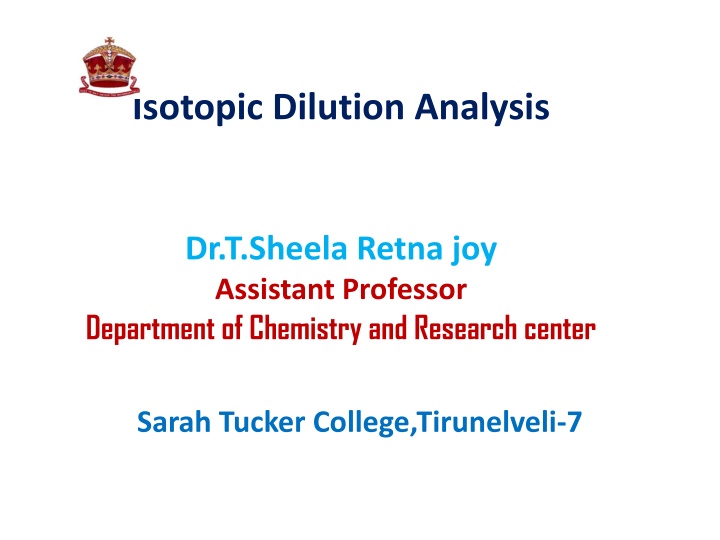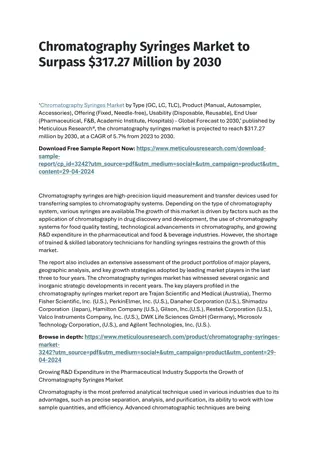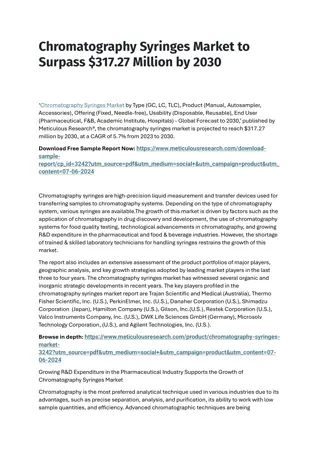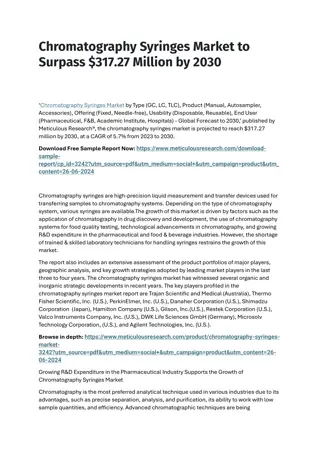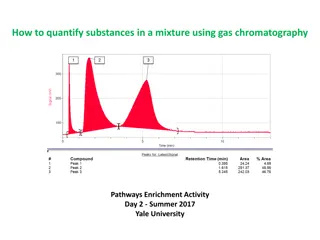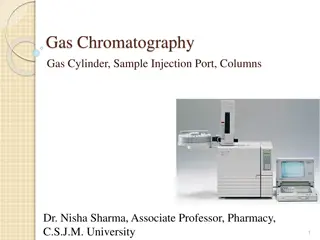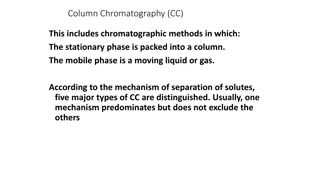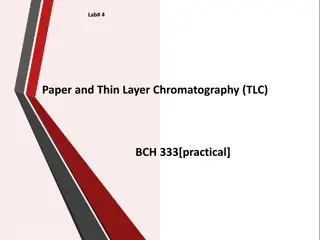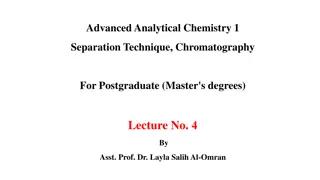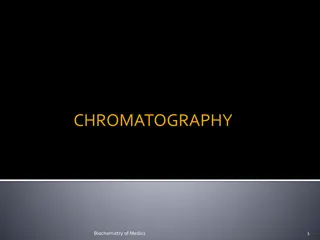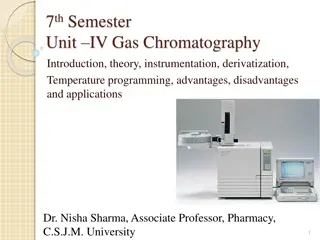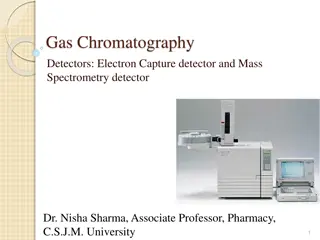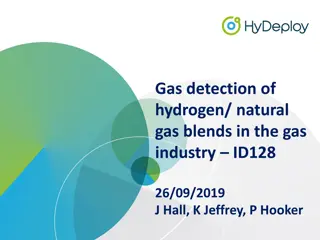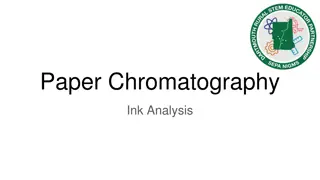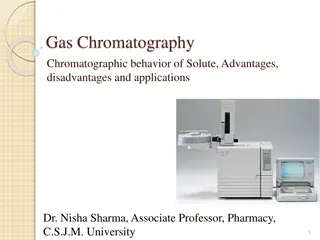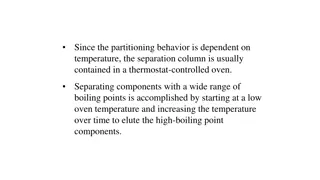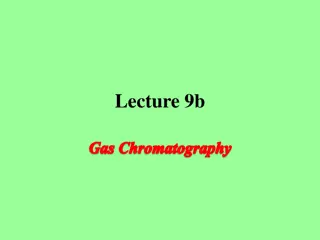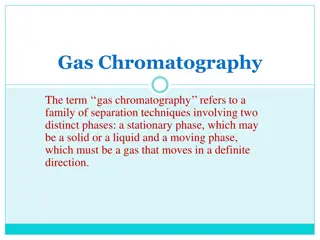Isotopic Dilution Analysis
Isotopic dilution analysis involves using radioactive forms of compounds to calculate the amount of non-radioactive substances in a sample. It is especially useful for complex biochemical substances like vitamins, insulin, and steroids. Neutron activation analysis utilizes nuclear reactions to determine the elements present in a sample by measuring induced radioactivity. Both techniques have contributed significantly to quantitative and qualitative analysis in the field of chemistry.
Download Presentation

Please find below an Image/Link to download the presentation.
The content on the website is provided AS IS for your information and personal use only. It may not be sold, licensed, or shared on other websites without obtaining consent from the author.If you encounter any issues during the download, it is possible that the publisher has removed the file from their server.
You are allowed to download the files provided on this website for personal or commercial use, subject to the condition that they are used lawfully. All files are the property of their respective owners.
The content on the website is provided AS IS for your information and personal use only. It may not be sold, licensed, or shared on other websites without obtaining consent from the author.
E N D
Presentation Transcript
Isotopic Dilution Analysis Dr.T.Sheela Retna joy Assistant Professor Department of Chemistry and Research center Sarah Tucker College,Tirunelveli-7
Introduction Isotopic dilution Isotopic dilution analysis was introduced by von Hevesy and Hofer in 1934. It involves the preparation of the analyte in a radioactive form. A known weight of this compound labeled with isotope (such as an acid with O-18 or a hydrocarbon with H-2) is then mixed with the mixture containing the compound to be analyzed. After treatment to ensure homogeneity between the labeled and unlabelled species, a portion is recovered as a chemically pure substance.
Isotopic dilution The pure substance is weighed and its radioactivity measured. The extent of the dilution of the radioactive sample may then be calculated and related to the amount of the nonradioactive substance in the original sample. Quantitative recovery (100% yield) is not required for a successful analysis.
Isotopic dilution The mathematical relationship for calculating the amount of the material in the original sample is Wm / Wa = Ai / Af - 1 or Wm = Wa { Ai / Af 1} where Wm is the mass of the analyte, Wa is the mass of the radioactive compound added, Ai is the activity of the added compound, and Af is the activity of the final purified compound
Isotopic dilution Isotopic dilution is especially useful in the analysis of complex biochemical substances, such as vitamins D and B, insulin, steroids, that occur a complicated matrix such that methods of separation and analysis are difficult. In a recent the isotopes are detected by a highly sensitive mass spectrometer; the radioactive form of the compound then acts as an internal standard for the analysis because the mass of the isotope used for labeling is different than the non-radioactive form of the element.
Activation Analysis Neutron activation analysis (NAA) Activation Analysis Neutron activation analysis (NAA) was discovered in 1936 when Hevesy and Levi found that samples containing certain rare earth elements became highly radioactive after exposure to a source of neutrons. From this observation, they recognized the potential of employing nuclear reactions on samples followed by measurement of the induced radioactivity to facilitate both qualitative and quantitative identification of the elements present in the samples.
Radiochemical Methods The basic essentials required to carry out an analysis of samples by NAA are a source of neutrons, instrumentation suitable for detecting gamma rays, and a detailed knowledge of the reactions that occur when neutrons interact with target nuclei.
Radiochemical Methods The sequence of events occurring during the most common type of nuclear reaction used for NAA, namely the neutron capture or (n, gamma) reaction, is illustrated in Figure 1. When a neutron interacts with the target nucleus via a nonelastic collision, a compound nucleus (metastable) forms in an excited state. The excitation energy of the metastable nucleus is due to the binding energy of the neutron with the nucleus. This nucleus will almost instantaneously de- excite into a more stable configuration through emission of one or more characteristic gamma rays.
